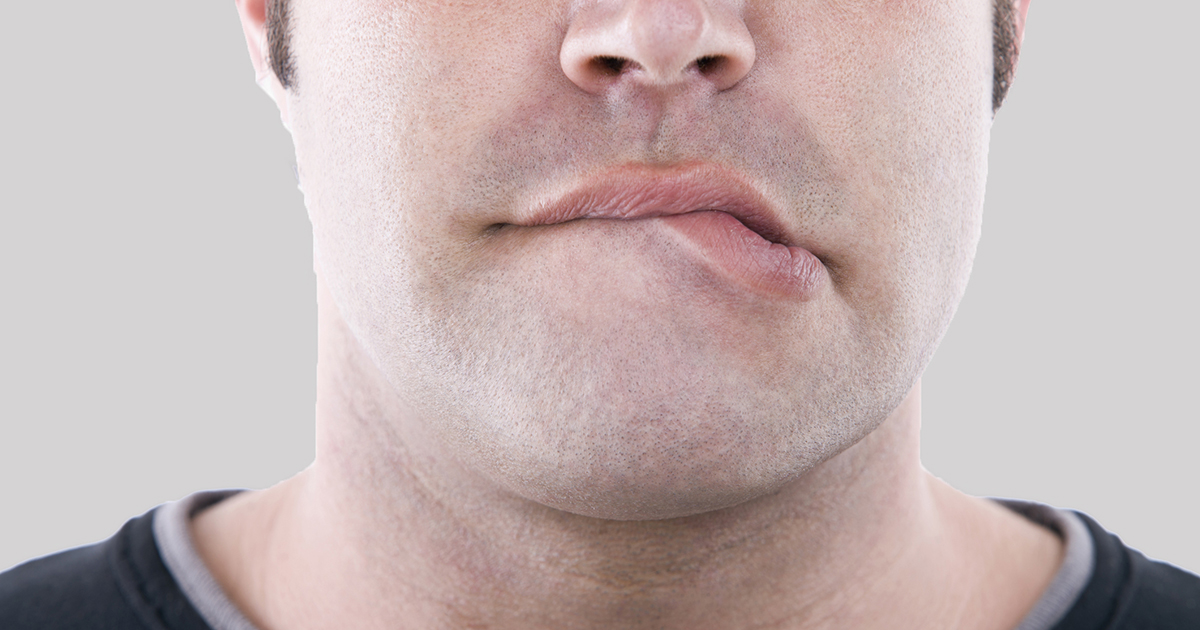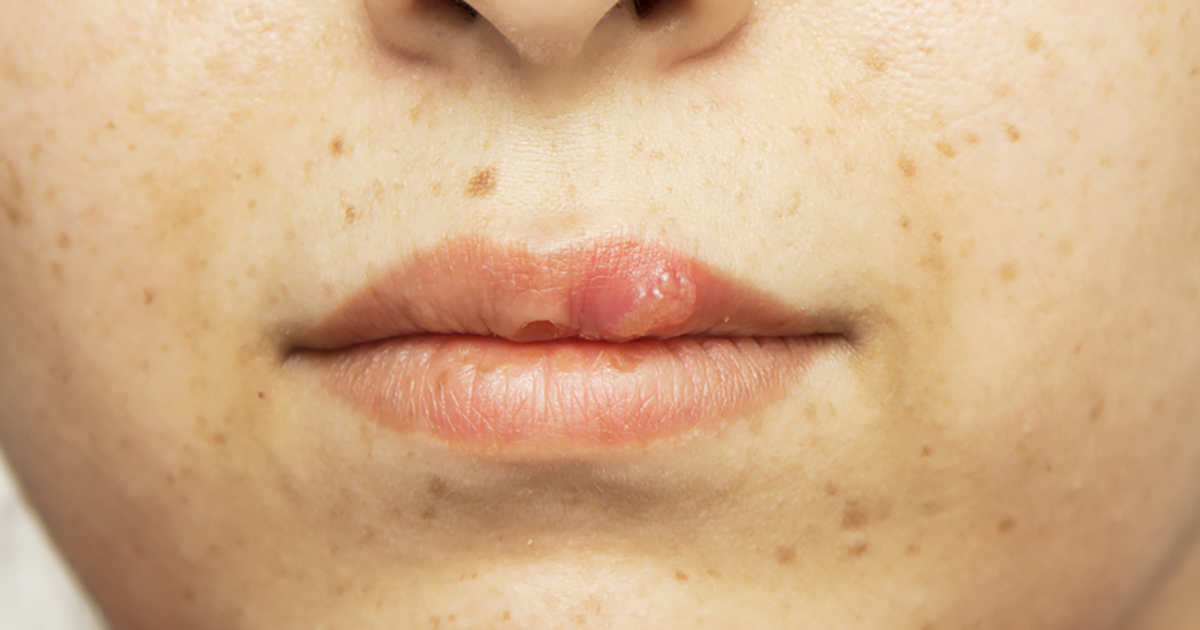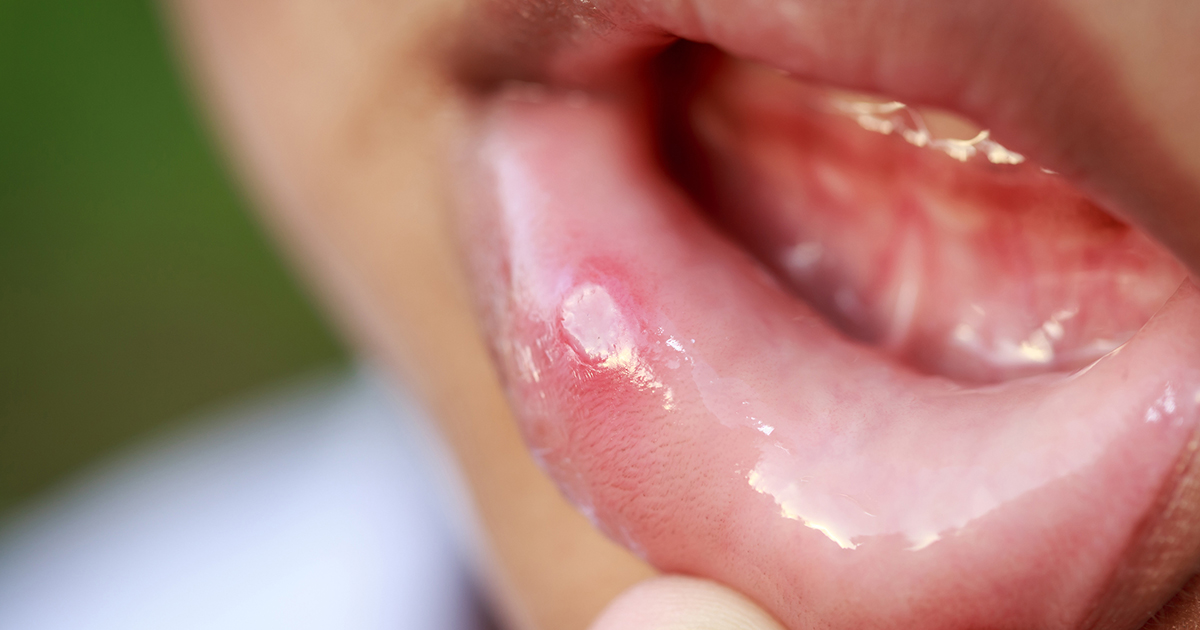The Difference Between Cold Sores & Canker Sores
Cold sores and canker sores are easily confused. Both occur near the mouth, can be quite painful, and share some of the same triggers, such as trauma and stress. However, these two sores have some significant differences regarding specific location, cause, treatment, and even whether or not they can be spread to others. Understanding the differences between the two can help patients choose the best treatment option to feel and look better as soon as possible.
Cold sores are viral infections that cause a weeping, painful blister on the outside of the mouth. A canker sore, on the other hand, is a small and painful lesion on the soft tissue of the mouth or at the base of the gums. Also known as mouth ulcers, canker sores are not contagious like cold sores. Here's how to spot the difference.
Causes Can Vary

Cold sores and canker sores can share many of the same triggers, including stress and facial trauma. However, the causes can vary for canker sores and aren't well understood whereas cold sores have a single cause: the herpes simplex virus (HSV). This highly contagious infection is lifelong, but it can remain dormant for years before a fever blister or cold sore develops. Most adults and at least half of children are infected with HSV, but many never develop a cold sore.
Canker sores are twice as common in women than men, and usually first occur between ten and twenty years old. No one knows exactly why canker sores happen. They may be caused by some type of virus, similar to cold sores, or they can be caused by an autoimmune condition or allergic reaction. There are many potential triggers of canker sores, including a diet low in folic acid, iron, or vitamin B12, as well as smoking, stress, and irritation or injury to the soft tissue of the mouth.
Continue reading to learn about how to use location to differentiate between the two.
Different Location

Canker sores rarely appear outside of the mouth and usually show up at the base of the gumline, under the tongue, on the inside of the lip or cheek, or on the soft tissue palate. Canker sores do not appear on the hard palate or the gum gingival gum tissue.
Cold sores usually appear in a different location not too far away from the mouth. Most cold sores show up on or near the lips, but they can sometimes appear on or inside the nose or on the face. It's also possible for a cold sore to show up inside the mouth, although this isn't common.
Keep going to learn about which one is contagious next.
Only One Is Contagious

Cold sores and canker sores may seem similar, but remember only one is contagious. Cold sores are caused by a viral infection known as herpes simplex virus (HSV), which is quite contagious and affects about fifty percent of kids going into kindergarten and up to ninety percent of adults, although only a small share actually experience symptoms. HSV can be spread to others through contact with the blister until the sore completely heals.
Because most individuals who have the herpes simplex virus also shed the virus, they can be infectious even when there are no sores. Patients may shed HSV cells from the site where a cold sore has occurred even when there are no symptoms, although they do not shed cells all the time. It's possible to spread the herpes simplex virus by kissing or sharing utensils, towels, or razors.
Get familiar with the differences in the appearance of the sores next.
Differences In Appearance

There are several differences in appearance between a cold sore and canker sore. In fact, a doctor can typically diagnose them on sight based on appearance and location. A canker sore will begin as a tiny bump inside the mouth but burst open one or two days later, leaving a yellowish or whitish open sore with a red border. Many canker sores occur in clusters are 1/8-inch to 1-1/4 inches in diameter. Most canker sores heal completely in ten to fifteen days but recur several times a year. The most common type of canker sore is a minor canker sore, which is very small. Major canker sores are the same except they are more painful and deeper. Herpetiform canker sores, despite the name, are not caused by the herpes virus like cold sores. This form tends to develop later in life as tiny sores in the mouth that occur in clusters of ten to one hundred sores.
Cold sores look very different than canker sores and have different symptoms. These sores often begin with a tingling sensation on the lip or around the mouth followed by the beginning of the sore about two days later. The sore will break open and ooze, leaving a crust over the blister. Cold sores can take up to four weeks to heal and leave an unsightly scab. Cold sores almost always occur outside the mouth, usually on the lip, nose, or near the mouth.
Continue to learn about the differences in treatment for both cold sores and canker sores.
Treatment May Vary

Canker sores and cold sores also differ in terms of treatment. There's not much a patient can do for a canker sore except reduce their discomfort until the sore heals. Very large or painful canker sores may be treated with oral steroids, topical numbing agents, and mouth rinses with dexamethasone. However, treatment may vary with a cold sore. Small cold sores may be treated in the same way as canker sores, or they can be treated with an antiviral able to reduce the recurrence of cold sores and speed healing. Prescription antivirals reduce pain and healing time from one to three weeks to seven to ten days, or less if taken at the first sign of the outbreak.
